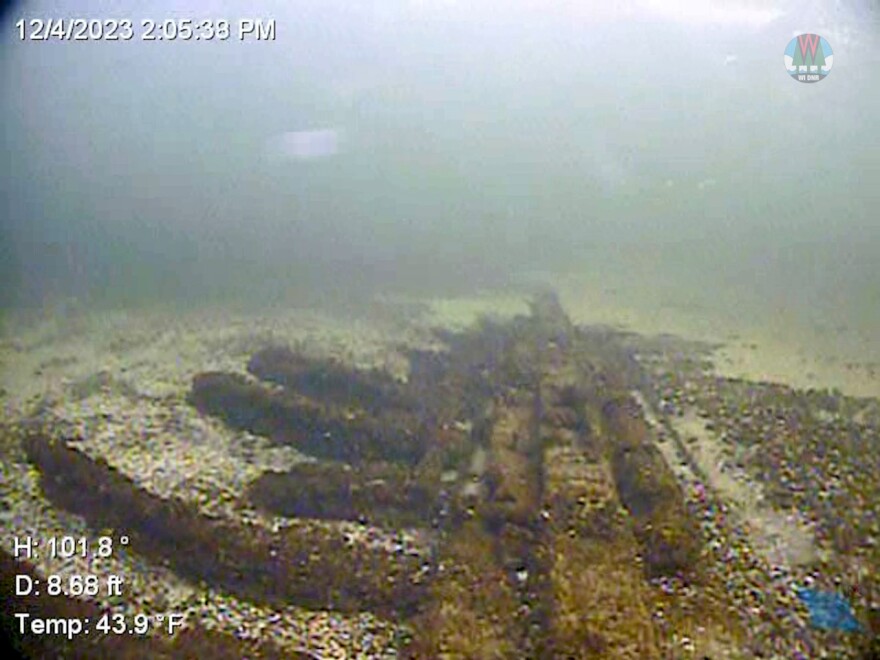While Tim Wollak and his 5-year-old daughter Henley were fishing near Green Island in Green Bay, Wisc., their fish finder sonar device picked up on something.
At first, Henley thought the images were of some sort of rare, freshwater octopus. What they've learned since that August day is that it is most likely the wreck of a missing ship more than 150 years old.
"It best matches up with a ship called George L. Newman," said Tamara Thomsen, a maritime archaeologist for the Wisconsin Historical Society.
The Wisconsin Historical Society came across photos Wollak had posted in Facebook interest groups, and shortly after matched them to its database of historic shipwreck losses based on the ship's location and features.
The 122-foot, 250-ton George L. Newman was built in Black River, Ohio, in 1855 and used in the lumber trade. In 1871, the great Peshtigo Fire would ravage northeastern Wisconsin, later becoming known as the deadliest wildfire in American history. The fire destroyed whole communities, killing over an estimated 1,200 people.
On that fateful October day in 1871, the Newman was trying to deliver a cargo of lumber from Little Suamico, Wisc., to Green Bay, but smoke from the fire was so thick that there was little visibility, causing an error in navigation.
The ship ended up running aground on the southeast end of Green Island, which sits in Lake Michigan. Fetched up so high on the shore, it couldn't get off, so the crew posted up on the island for about a week, salvaging cargo until they could be rescued.
The ship, however, remained behind. "And it ended up breaking up in storms over the years and ice. And then it was kind of swallowed by the shoal, covered up with sand until it was recently exposed and discovered by the Wollaks," Thomsen said.
But despite the historical significance of her discovery, Henley felt some disappointment.
"She was hoping that there would be some treasure that we could get to keep from the boat," said Wollak.
The Wisconsin Historical Society, in partnership with the Wisconsin Department of Natural Resources, plans on going out to take a look at the shipwreck to confirm its identity in the spring.
Copyright 2023 NPR. To see more, visit https://www.npr.org.


